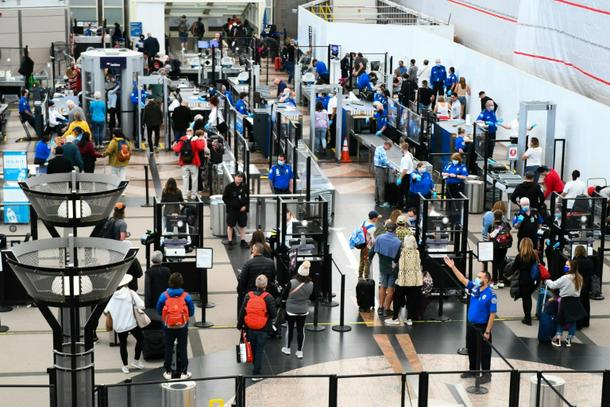
US airlines are warning of potential holiday travel disruptions from a powerful winter storm
Washington (AFP) - US forecasters warned of life-threatening weather as a “once-in-a-generation” winter storm on Thursday threatened to wreak havoc on holiday travel plans for millions of Americans.
Airlines told travelers to brace for delays and cancellations as an Arctic cold front gripped the central United States on Wednesday. It was expected to sweep through the Midwest and head towards the East Coast on Friday, just before Christmas.
The National Weather Service (NWS) warned the storm would cause “widespread disruptive and potentially crippling impacts across the central and eastern United States,” in a forecast discussion released at 0822 GMT on Thursday.
It forecast that “record-breaking cold and life-threatening wind chills over the Great Plains (would) overspread the eastern half of the Nation by Friday.”
The NWS also warned of wind chill temperatures as low as -40 degrees Fahrenheit (-40 degrees Celsius) in some areas, urging people to take precautions. Some locations could see readings plunge to -70F, it added.
“Wind chills of this magnitude can cause frostbite in less than 5 minutes if precautions are not taken, with hypothermia and death also possible from prolonged exposure to the cold,” it said.
The NWS said strong gusts and heavy snow could cause serious damage to infrastructure and disruption to air and road travel.
The storm comes as the Transportation Security Administration said it expects holiday travel volume to be close to pre-pandemic levels, with the busiest day on Thursday.
The American Automobile Association estimated that more than 112 million people will travel 50 miles or more from home between Friday and January 2, the vast majority – 102 million – by car.
- ‘Bomb cyclone’ -
The Federal Aviation Administration warned that high winds and heavy snow could delay flights at major air travel hubs Minneapolis-St. Paul, Chicago and Denver.
In Denver, the temperature was expected to plummet from a high of around 50 degrees Fahrenheit on Wednesday to minus 16 degrees Fahrenheit on Thursday.
Authorities in the Colorado capital have opened the Denver Coliseum as an emergency warming center.
AccuWeather forecasters said the storm could rapidly strengthen into what is known as a “bomb cyclone” through a process known as “bombogenesis,” when the barometric pressure drops and a cold air mass collides with a warm air mass.
The NWS in Buffalo, New York called it a “once-in-a-generation storm” with wind gusts of more than 65 miles per hour (105 kilometers per hour), wind chill as low as 10 to 20 degrees (Fahrenheit) below zero, and scattered or possibly widespread power outages.
Forecasters in Minneapolis described it as a “high-end, life-threatening event” that “needs to be taken seriously.”
In Fort Worth, Texas, the NWS told residents the cold snap was not expected to be as devastating as the one in February of last year, when freezing temperatures knocked out power to millions in the Lone Star State and caused dozens of deaths.
And in Washington, lawmakers were scrambling to complete work on a sweeping $1.7 trillion spending package before the massive winter storm complicates travel plans.